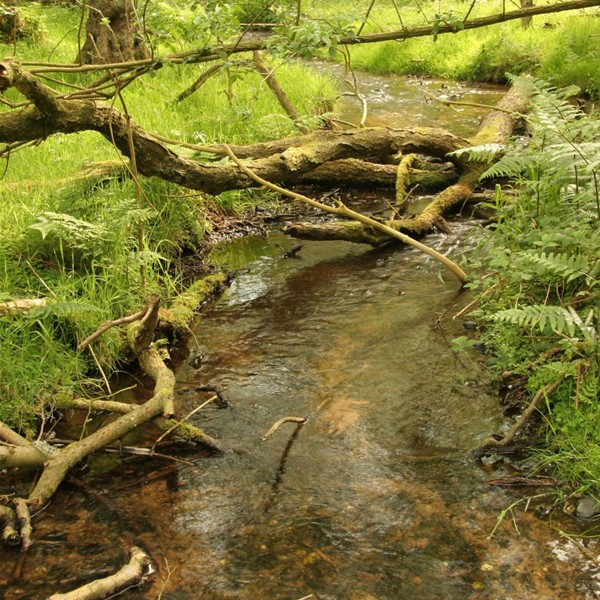- Dead wood
- Woody debris dams
Coarse woody debris (also known as Large Woody Debris - LWD) in stream channels has multiple ecological and hydrologic benefits. Coarse woody debris consists of large sections of deadfall: tree stems or stumps that either fall into or are deliberately placed in streams. Coarse woody debris can be used with varying degrees of naturalness.
At one end of the spectrum, coarse woody debris can be arranged to form simpler leaky dams (F13), which effectively restrict water flow. At the other end of the spectrum, natural deadfall occurs when riparian trees are allowed to fall freely into streams. Generally, large woody debris should be left in place, unless there is strong, evidence-based justification for removing it, such as the need to lower water levels or shorten flood duration, supported by hydraulic analysis. If repositioning is required, a detailed management plan should be developed with input from relevant stakeholders. Any repositioned debris must be securely anchored at 200–400 mm intervals to ensure stability, improve flow capacity and maintain diverse, low-velocity habitats. In areas where LWD has been lost, reintroduction can help to restore the stream's ecological and hydrological functions.
Coarse woody debris generally slows water flow velocity and can reduce the peak of flood hydrographs by deflecting the water flow in various directions and thereby creating also various paths, which may even vary depending on the water height—though this effect is limited in confined or privately owned settings where the river lacks space to adjust its course. They generally allow an increase of the diversity of flow facies. In addition to its role in slowing streamflow and facilitating sediment accumulation, coarse woody debris can improve aquatic biodiversity by retaining food and providing additional habitat, such as shelters and spawning sites.
Often described as the 'backbone' of the watercourse, large woody debris resists and deflects flow and protects the banks from erosion. It also creates diverse microhabitats by altering channel structure, forming pools, gullies and sediment bars that provide shelter, spawning and feeding habitat for aquatic organisms.
Unlike measures such as beaver mimicry structures (F05) which can create standing water, coarse woody debris primarily slows flow and facilitates sediment deposition without significantly altering the overall hydrology of the stream. This approach is particularly effective in moderate-flow streams where habitat improvement and sediment control are the primary objectives.
